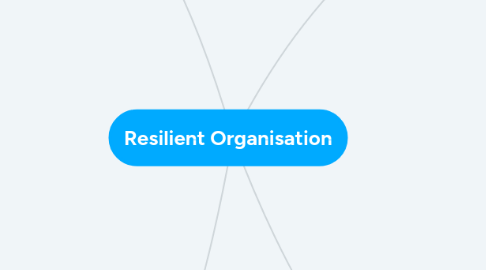
1. Place (Infrastructure & Environment)
1.1. Reduced Exposure & Fragility
1.1.1. Comprehensive Hazard and Exposure Mapping
1.1.2. Appropriate Codes, Standards, Regulatory Compliance
1.1.3. Effectively Managed Protective Ecosystems (External Physical Environment)
1.1.4. Robust Protective Infrastructure
1.2. Effective Provision of Critical Services
1.2.1. Effective Stewardship of Ecosystems as a Member of the Broader Community
1.2.2. Flexible Infrastructure
1.2.3. Retained Spare Capacity
1.2.4. Diligent Maintenance & Continuity
1.2.5. Adequate Continuity for Critical Assets & Services
1.3. Reliable Mobility & Communications
1.3.1. Diverse & Affordable Work Location Practices (commuting, telework, flex work hours, access to transportation)
1.3.2. Reliable Communications Technology Accessible by All
1.3.3. Secure Technology Networks
2. Knowledge (Leadership & Strategy)
2.1. Effective Leadership & Management
2.1.1. Appropriate Senior Decision Making (transparent, inclusive, integrated)
2.1.2. Effective Coordination with Other Governance Bodies
2.1.3. Proactive Multi-Stakeholder Collaboration
2.1.4. Comprehensive Hazard Monitoring and Risk Assessment
2.1.5. Comprehensive Emergency Management
2.2. Empowered Stakeholders
2.2.1. Training, Education, Mentorship
2.2.2. Widespread Awareness and Preparedness
2.2.3. Effective Mechanisms for Staff to Engage with Leadership
2.3. Integrated Development Planning
2.3.1. Comprehensive Monitoring & Data Management
2.3.2. Consultative Planning Process
2.3.3. Integrated and Flexible Facilities/Real Estate Planning
2.3.4. Robust Planning & Approval Process
3. People (Health & Wellbeing)
3.1. Minimal Human Vulnerability
3.1.1. Staff Safety and Security
3.1.2. Family Wellbeing
3.1.3. Access to Basic Needs at Work
3.1.4. Mental Strength and Wellbeing
3.2. Diverse Livelihoods & Employment
3.2.1. Inclusive Labour Polilcies
3.2.2. Relevant Skills and Training
3.2.3. Supportive Workplace Mechanisms
3.2.4. Diverse Protection of Livelihoods Following a Shock
3.3. Safeguard to Human Health & Life
3.3.1. Monitoring and Mitigation of Workplace Health
3.3.2. Adequate Access to Quality Healthcare
3.3.3. Effective Emergency Response Services
3.3.4. Targeted Mental Health Resources
4. Organisation (Economy & Society)
4.1. Collective Identity and Mutual Support
4.1.1. Supportive Social Structures
4.1.2. Cohesive Community
4.1.3. Strong Culture & Identity
4.1.4. Active Staff Engagement
4.2. Comprehensive Security
4.2.1. Effective Systems to Deter Crime
4.2.2. Effective Response to Local Incidents
4.3. Sustainable Financial Position
4.3.1. Well-Managed Finances
4.3.2. Comprehensive Business Continuity Practices
4.3.3. Diverse Economic Portfolio
4.3.4. Attractive Business Environment
4.3.5. Strong Integration with External Economies
